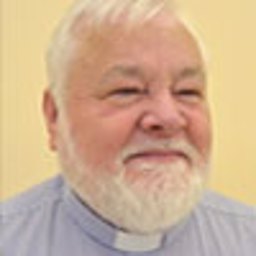The season of Advent can be difficult to celebrate. All around us, the world is already celebrating Christmas. Carols play in an endless loop, and I confess that I also start playing carols earlier at home.
Advent is a season of preparation, anticipation, and hope. It comes from the Latin word adventus, which means “coming.” We prepare to celebrate the arrival, the birth, of the one whom Christians name “the Light of the world.” In preparation, churches light candles on an Advent wreath. A ring of greenery, a symbol of life, contains five candles. The candles used to be purple, marking Advent as a season of penitence. But the tone of Advent has changed from penitence to anticipation and hope; churches now use blue candles, with a white candle in the centre which we light on Christmas Eve.
Some churches name the candles—the Candles of Hope, Peace, Joy, and Love. The fifth candle is the Christ Candle. Others name the candles as the Prophecy candle, the Bethlehem candle, the Shepherds’ candle, the Angels’ candle, and the Purity candle.
And it’s fine to do that. Unfortunately, doing so diminishes the symbolic power of the candles. They don’t “stand for” something. Rather, the candles participate in the primal symbol of light. We’ve lost the power of this primal symbol in a world where we can turn on lights with the flick of a switch.
We start in darkness on the First Sunday of Advent, the first day of a new year for the church, and we light a single flickering candle. It is a fragile light; it can be snuffed out with a single puff, so we guard the light. We care for this frail light, shielding it to hold the darkness at bay as we prepare in hope. Each week, we light one more candle, the light growing week by week until the world is ablaze at Christmas.
Entering the darkness and growing the light are important metaphors for our Advent journey. We enter the shadows of despair, war, sorrow, and hate. We wait actively for the Light of the World, and the growing light of the candles is a sign of hope. We embody that hope as we live peacefully, joyfully, lovingly. We wait. We sing. We pray anew for light–in–the–midst–of–shadows.
Hope seems fleeting in this world. We hear of desperate refugee families; isolated prisoners; heartbroken addicts; shivering homeless persons; first responders traumatized by PTSD; spouses caring for a lifetime partner who is slipping into dementia; hospital workers running on fumes; families which must work multiple jobs for shelter and food.
We enter the shadows, carrying the fragile light within us. We proclaim a hope that rings out in the midst of catastrophe. In the gloom of this time, we point to the light, which is just barely visible. We seek signs of hope that one is coming whose name is Peace, whose name is Light, whose name is Hope.
Advent waiting is an active waiting, a dynamic season of hope and compassion. In the 12th century, Bernard of Clairvaux wrote eloquently about “three Advents.”
The first Advent is the birth at Christmastide. It’s the familiar story of an unwed teenaged Palestinian peasant girl giving birth in the midst of poverty. In Matthew’s story, that young family become refugees in fear for their lives.
The third Advent comes at the end of the age, when Jesus returns to herald the coming of God’s kingdom “on earth as in heaven.”
The second Advent is the one in between, the everyday arrival of Jesus: the knock at the door; the still, small voice; the hungry mother seeking food for herself and her children; the migrant worker; the weary refugee; the asylum seeker; the tired, cold, homeless person begging for a word of comfort, a dollar of hope. Leo Tolstoy tells this Advent story beautifully in “Where Love Is, God Is,” also known as “Martin the Cobbler.”
This second Advent is where we live. We discern where Jesus comes. We seek signs of this growing, flickering light amid the shadows of the world within us and around us. Our hope spurs us to action as we seek the Christ child amid wars and rumours of wars.
This second Advent is an opportunity to learn again that faith is a verb. We also incarnate God’s love, God’s justice, God’s peace, God’s intention for our world.



